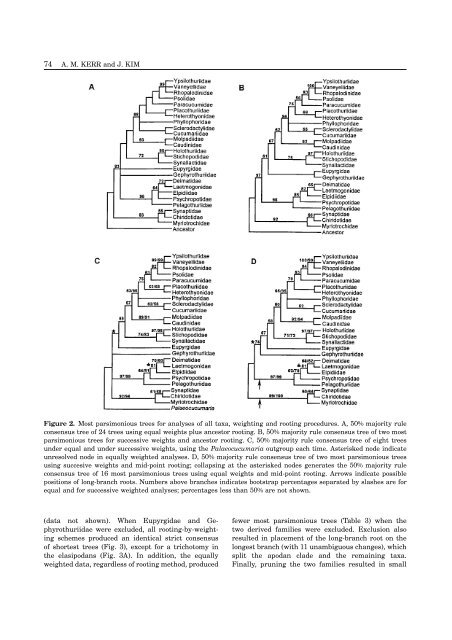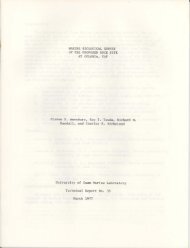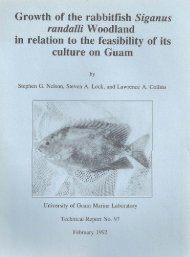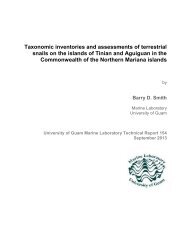Phylogeny of Holothuroidea (Echinodermata) inferred from ...
Phylogeny of Holothuroidea (Echinodermata) inferred from ...
Phylogeny of Holothuroidea (Echinodermata) inferred from ...
You also want an ePaper? Increase the reach of your titles
YUMPU automatically turns print PDFs into web optimized ePapers that Google loves.
74 A. M. KERR and J. KIM<br />
Figure 2. Most parsimonious trees for analyses <strong>of</strong> all taxa, weighting and rooting procedures. A, 50% majority rule<br />
consensus tree <strong>of</strong> 24 trees using equal weights plus ancestor rooting. B, 50% majority rule consensus tree <strong>of</strong> two most<br />
parsimonious trees for successive weights and ancestor rooting. C, 50% majority rule consensus tree <strong>of</strong> eight trees<br />
under equal and under successive weights, using the Palaeocucumaria outgroup each time. Asterisked node indicate<br />
unresolved node in equally weighted analyses. D, 50% majority rule consensus tree <strong>of</strong> two most parsimonious trees<br />
using succesive weights and mid-point rooting; collapsing at the asterisked nodes generates the 50% majority rule<br />
consensus tree <strong>of</strong> 16 most parsimonious trees using equal weights and mid-point rooting. Arrows indicate possible<br />
positions <strong>of</strong> long-branch roots. Numbers above branches indicates bootstrap percentages separated by slashes are for<br />
equal and for successive weighted analyses; percentages less than 50% are not shown.<br />
(data not shown). When Eupyrgidae and Ge- fewer most parsimonious trees (Table 3) when the<br />
phyrothuriidae were excluded, all rooting-by-weighting<br />
two derived families were excluded. Exclusion also<br />
schemes produced an identical strict consensus resulted in placement <strong>of</strong> the long-branch root on the<br />
<strong>of</strong> shortest trees (Fig. 3), except for a trichotomy in longest branch (with 11 unambiguous changes), which<br />
the elasipodans (Fig. 3A). In addition, the equally split the apodan clade and the remaining taxa.<br />
weighted data, regardless <strong>of</strong> rooting method, produced Finally, pruning the two families resulted in small
















